How Much Does It Cost to Redo a Bathroom
So, How Much Does It Cost to Redo a Bathroom? Redoing a bathroom is a big project. It can transform your home and add value.
Understanding bathroom renovation costs is crucial. It helps you plan and budget effectively. Costs can vary widely based on several factors. For a deeper dive into budgeting, see our guide: How Much to Budget for Bathroom Renovations.
The size of your bathroom plays a big role. Larger spaces often mean higher costs. The choice of materials also impacts the budget. Explore smart, small-space ideas here: Designing a Small Bathroom for Maximum Impact.
Labor is another significant expense. Hiring professionals ensures quality but comes at a price. DIY can save money but requires skill. Learn the typical hidden line items: 5 Hidden Costs to Watch Out for in Bathroom and Kitchen Renovations.
Unexpected issues can arise during renovations. These can increase costs unexpectedly. Planning for contingencies is wise. Waterproofing in a home renovation is a classic example.
How much does it cost to redo a bathroom, really? This guide will break down bathroom renovation pricing. It will help you understand what to expect. Let’s explore the costs involved in redoing a bathroom.
Average Bathroom Renovation Cost: What to Expect in 2026
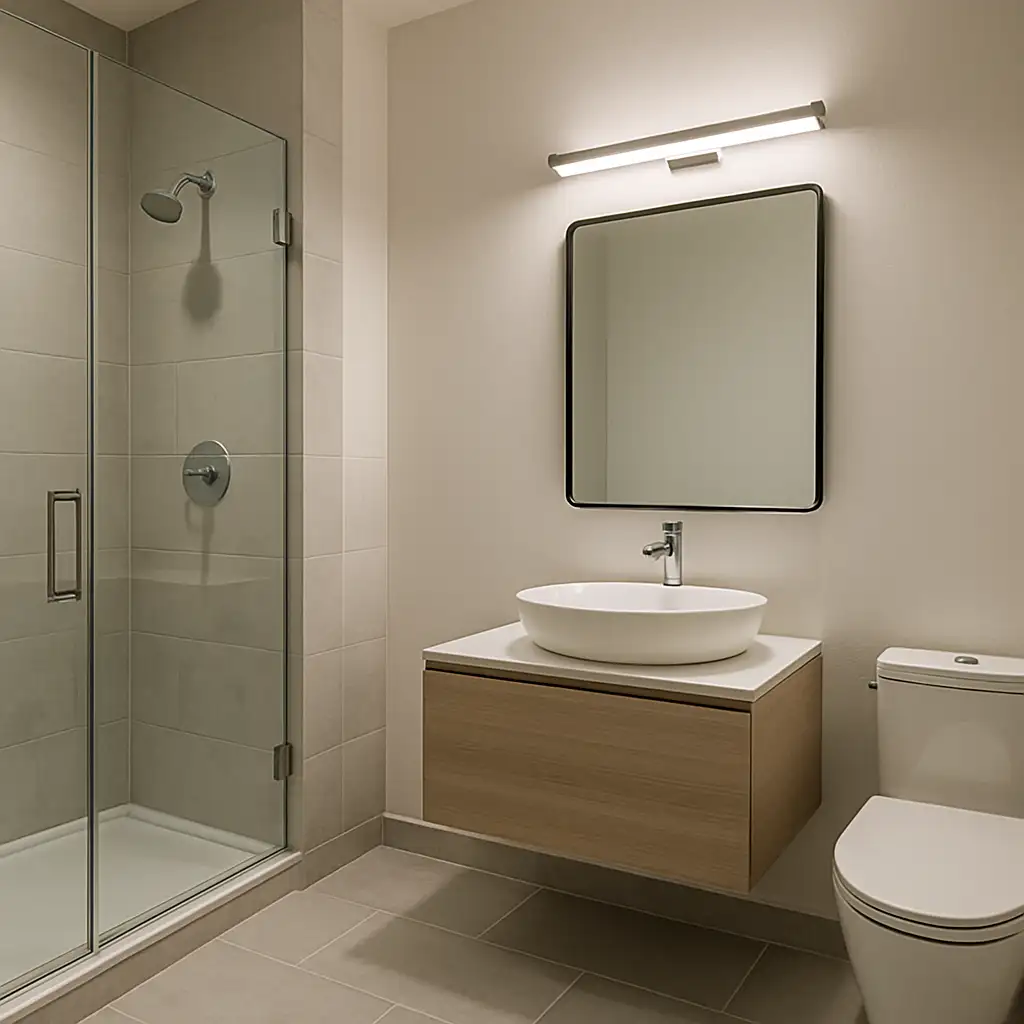
As we look ahead to 2026, bathroom renovation costs continue to evolve. Various trends and material costs influence prices. Homeowners should prepare for a range of potential expenses. For inspiration, check out current and upcoming trends: 5 Bathroom Renovation Trends to Transform Your Space in 2025.
On average, a bathroom remodel can cost between $6,000 and $15,000. This range covers basic to mid-range renovations. High-end remodels can exceed $25,000.
Several factors drive these costs. These include the size of the bathroom and the extent of the renovation. Material choices also play a crucial role in cost determination.
A small bathroom might demand less spending. However, even minor updates can add up. In contrast, larger bathrooms require more materials and labor. If you’re comparing small-bath budgets, see: How much does a small bathroom renovation cost in Sydney?
Here’s a quick breakdown of potential cost expectations:
- Basic Renovation: $6,000 – $10,000
- Mid-Range Renovation: $10,000 – $15,000
- High-End Renovation: $20,000 and up
Understanding these averages can help set a realistic budget. It’s important to allocate funds wisely, accounting for quality and longevity. As the new year approaches, staying informed on bathroom renovation pricing trends is beneficial for planning and budgeting accurately.
Key Factors That Influence Bathroom Renovation Pricing
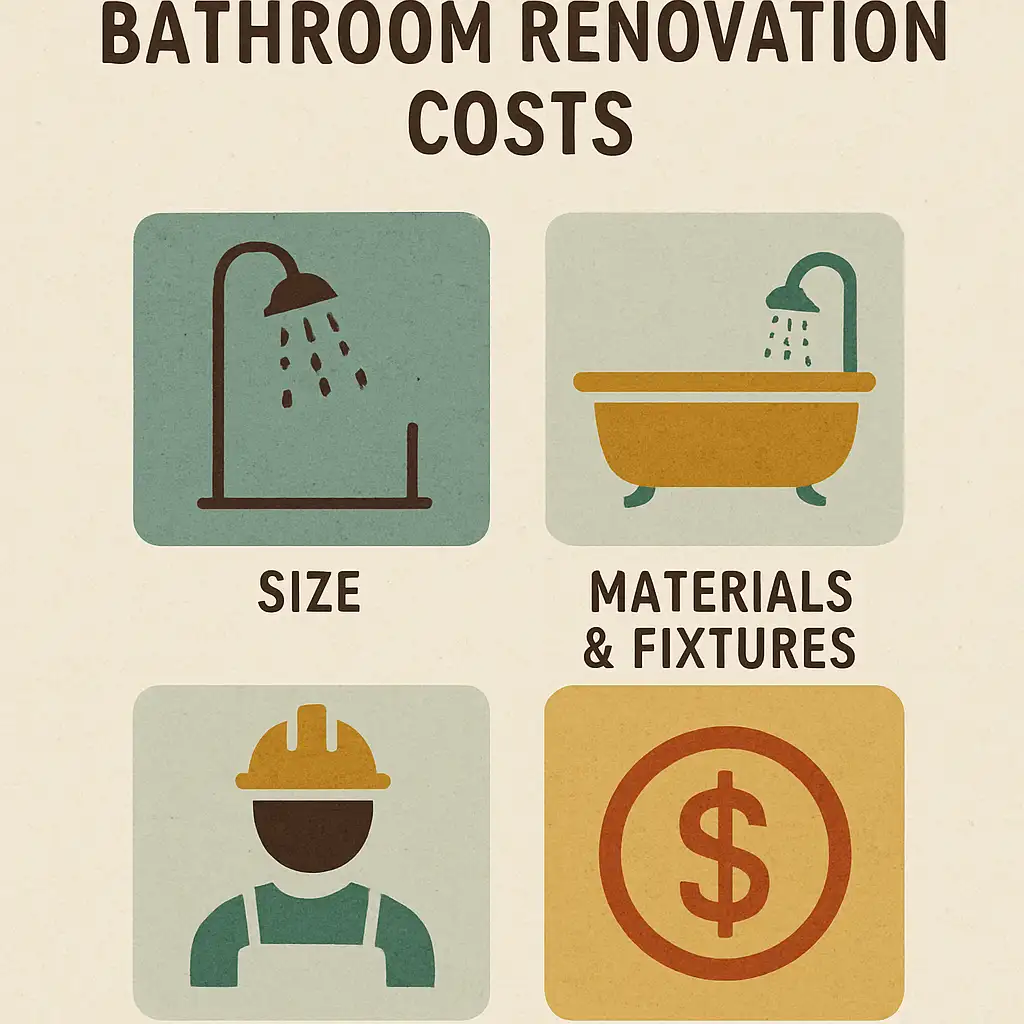
Several key factors drive bathroom renovation pricing. Understanding these can help homeowners plan effectively. Labor, materials, and customisations all play pivotal roles.
Labor costs often form a large part of the budget. Skilled professionals are required for plumbing and electrical work. Thus, these areas can be significant expenses. Thus, these areas can be significant expenses. See our step-by-step service overview: Home Renovation Builder Services.
The choice of materials is another crucial element. Premium materials like natural stone can greatly increase costs. Conversely, using more affordable tiles or fixtures can help reduce expenses. For fixtures guidance, read: Bathroom Fixture Upgrades: Choosing the Right Faucets, Sinks, and Toilets for Your Bathroom Renovation in Sydney.
The project’s complexity also impacts the budget. Extensive changes to the layout require more time and resources. These adjustments can quickly escalate expenses. If luxury finishes are in play, compare: The True Cost of a Luxury Bathroom Renovation in Sydney: From Concept to Completion.
Location of the property can also affect pricing. In some areas, labor and materials are more expensive. Therefore, it’s essential to consider regional pricing variations.
Additionally, fixtures and fittings significantly influence costs. High-end brands or custom pieces often come with higher price tags. Yet, they can dramatically transform the space. For bathtubs specifically, see: Top 3 Bathtubs To Replace Out Dated Bathtubs in Bathroom Renovations.
Homeowners should also factor in unforeseen issues. Problems like water damage or hidden mold can arise during renovation. Addressing these issues can add unexpected costs.
In summary, key factors affecting bathroom renovation costs include:
- Labor and professional expertise
- Material quality and selection
- Project complexity and scope
- Local market rates
- Choice of fixtures and fittings
- Unforeseen structural or plumbing challenges
Considering these factors early can aid in creating a realistic and manageable budget for bathroom renovation projects.
Bathroom Remodel Price Breakdown: Labor, Materials, and More
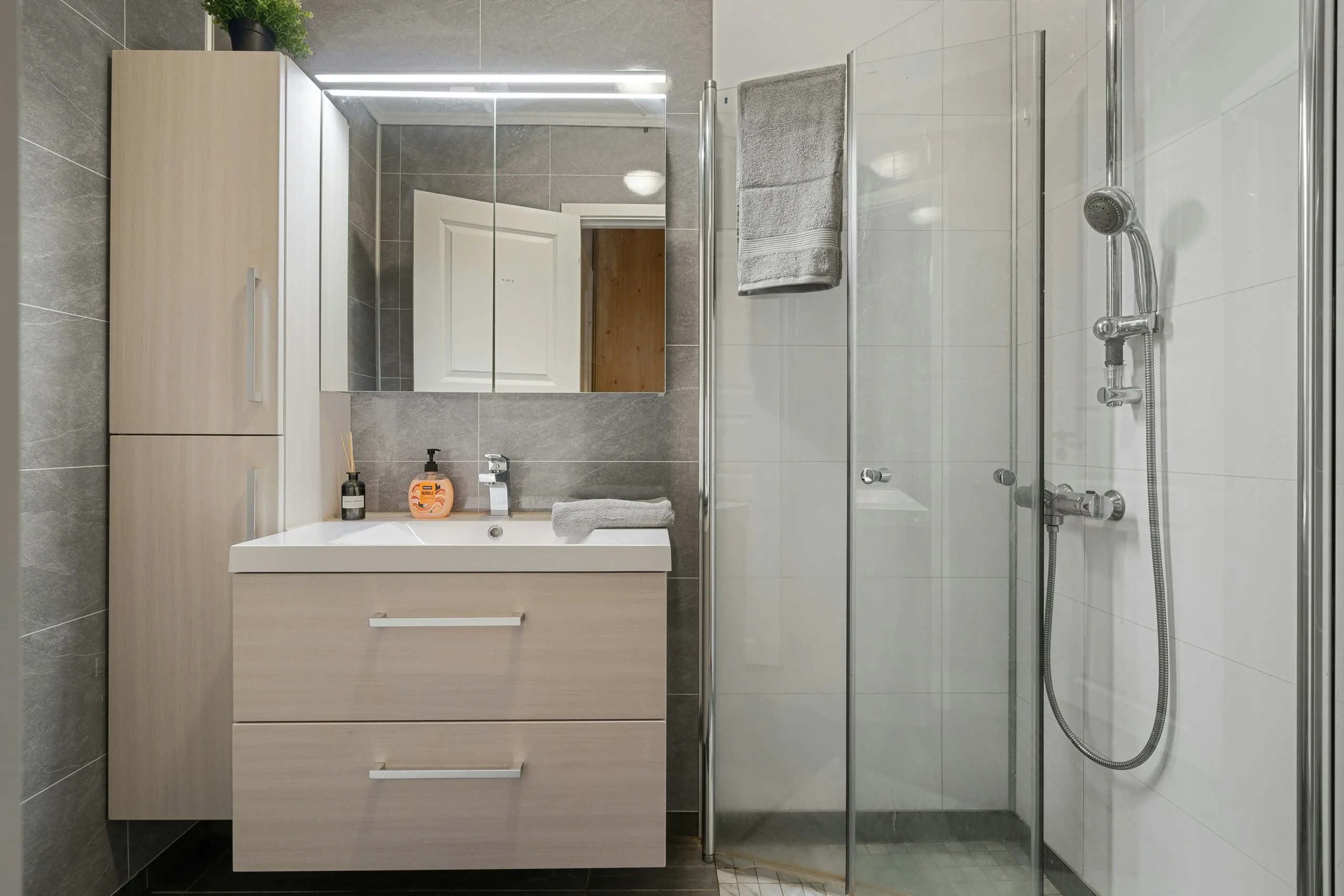
by Lisa Anna (https://unsplash.com/@lisaanna195)
A comprehensive breakdown of bathroom remodel costs can help in budgeting. Knowing where your money will go makes planning more efficient.
Labor typically consumes a large portion of the budget. This cost includes the work of plumbers, electricians, and tilers. Their expertise is essential for a successful bathroom renovation. Compare scope-to-timeline impacts: What Impacts the Timeline of a Bathroom Renovation in Sydney?
Materials are the next significant expense. Flooring and tiles can range from budget-friendly to luxurious choices. The type and quality you choose will greatly affect the overall cost. For tile selection help, visit: Bathroom Tile Selection Sydney | Buyer’s Guide by RJG Group.
Fixtures, such as toilets, sinks, and bathtubs, also play a significant role. Prices vary widely based on brand and style. A high-end bathtub can cost exponentially more than a standard model. For showers, read: Crafting Your Dream Shower. For toilets, see: Choosing the Perfect Toilet for Your Bathroom Renovation.
Countertops and cabinetry are further critical components. Custom pieces add beauty and functionality but come with high price tags. Laminate options might be more affordable than granite or marble. For budget-conscious upgrades, see: From Bad to Divine: Revamping Your Bathroom on a Budget.
Additionally, wall finishes and paint are key considerations. From basic paint to premium wallpapers, choices will differ in price. Picking durable, water-resistant finishes is wise.
Accessory costs can add up too. Towel racks, mirrors, and lighting fixtures vary in price. Quality and design can make a noticeable difference in the remodel.
Here’s a typical breakdown of bathroom remodel expenses:
- Labor Costs: 40%-60%
- Materials: 30%-40%
- Fixtures and Fittings: 10%-20%
For a more detailed list, consider:
- Plumbing and Electrical: $1,000 – $2,500
- Tiling and Flooring: $1,500 – $3,500
- Countertops and Cabinetry: $1,200 – $3,000
Understanding these elements will help manage your budget. Knowing the intricacies of each segment ensures a smoother renovation process. This detailed guide allows for informed decision-making, ensuring value for your investment.
Cost by Bathroom Size: Small, Medium, and Large Spaces
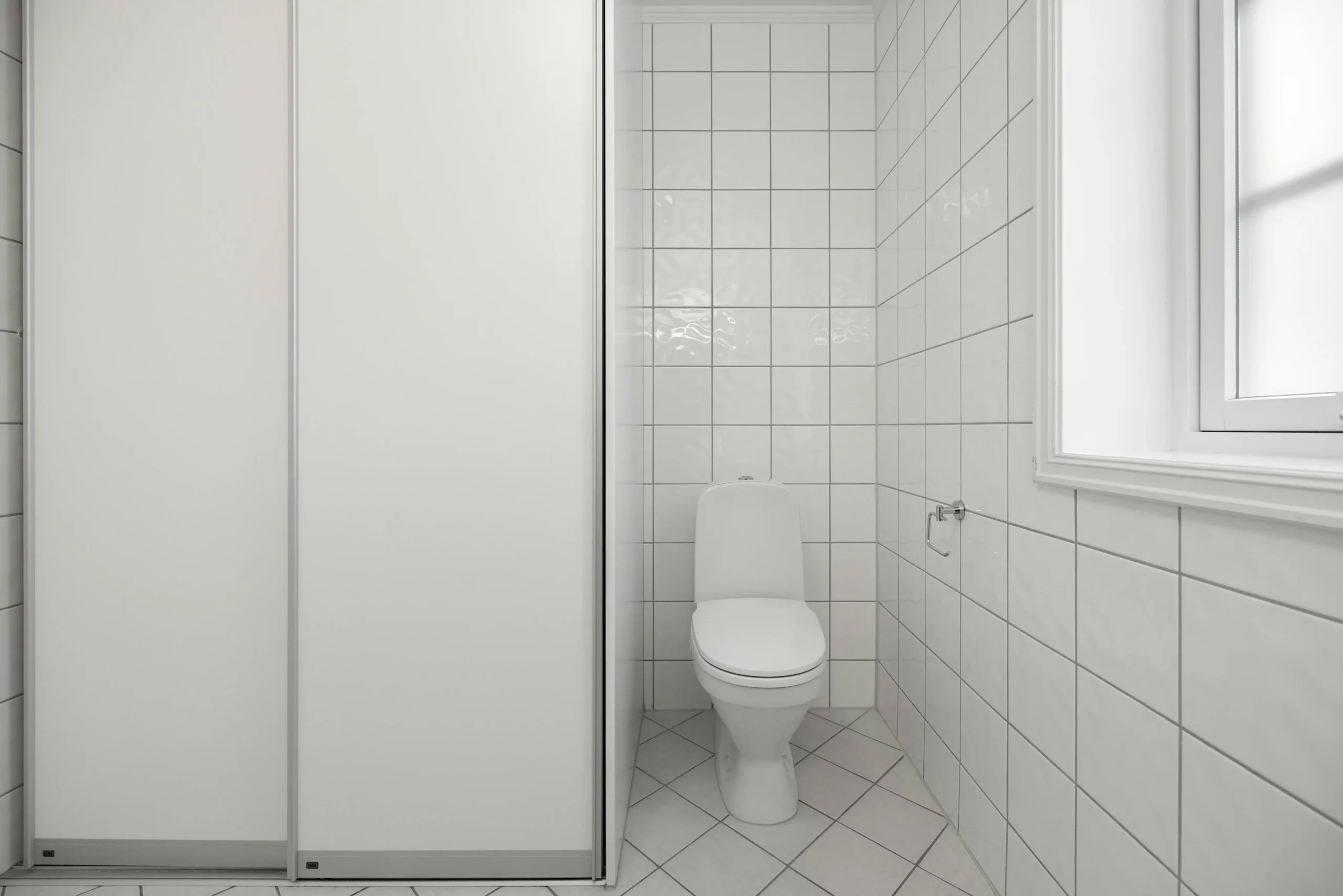
by Lisa Anna (https://unsplash.com/@lisaanna195)
Bathroom size greatly influences renovation costs. Each size category has its own unique challenges and expenses.
Small bathrooms can offer budget-friendly renovation opportunities. With less square footage, material costs are lower. However, they may require creative solutions to maximise space. Practical ideas here: Maximising Space: Innovative Solutions for Small Bathroom Renovations.
Medium-sized bathrooms strike a balance. They allow for more fixtures and additional features. While costs are higher than smaller bathrooms, you can enjoy greater design flexibility.
Large bathrooms offer the most potential for luxury and creativity. They can accommodate features like separate tubs and showers. However, the cost for materials, labor, and fixtures increases significantly.
Here’s a general cost breakdown by bathroom size:
- Small Bathroom (less than 40 sq ft): $6,000 – $10,000
- Medium Bathroom (around 50 sq ft): $10,000 – $20,000
- Large Bathroom (over 100 sq ft): $20,000 and up
Understanding how size impacts cost is crucial. Larger spaces require more materials and labor. Plan accordingly to match your vision with your budget, ensuring each element complements the space.
Budget, Mid-Range, and Luxury Bathroom Renovations: What’s the Difference?
Bathroom renovations vary widely in cost and style. Understanding the difference between budget, mid-range, and luxury options helps to set realistic expectations.
Budget renovations focus on essential upgrades. These projects typically involve inexpensive materials and a do-it-yourself approach. The goal is to refresh the space without breaking the bank. Try these tips: Renovating on a Budget.
Mid-range renovations offer more options. They allow for better quality materials and professional installation. Homeowners can incorporate modern fixtures and enhanced design. Explore our core service: Bathroom Renovation Sydney.
Luxury bathroom renovations prioritise high-end finishes. Expect custom features, premium materials, and state-of-the-art technology. These projects often require a professional designer. Read more: The True Cost of a Luxury Bathroom Renovation in Sydney.
Budget Renovations May Include:
- Basic fixtures from big-box retailers
- Simple tile choices like ceramic
- DIY painting and minor updates
Mid-Range Renovations May Include:
- Solid-surface countertops
- Pre-fabricated vanities and custom lighting
- Professional tile installation with quality materials
Luxury renovations often feature amenities that enhance comfort and style. Think spa-like experiences right in your home. High-end fixtures, custom cabinetry, and advanced technology are common.
Homeowners should consider their goals and available resources. It’s important to align your renovation with your lifestyle and budget.
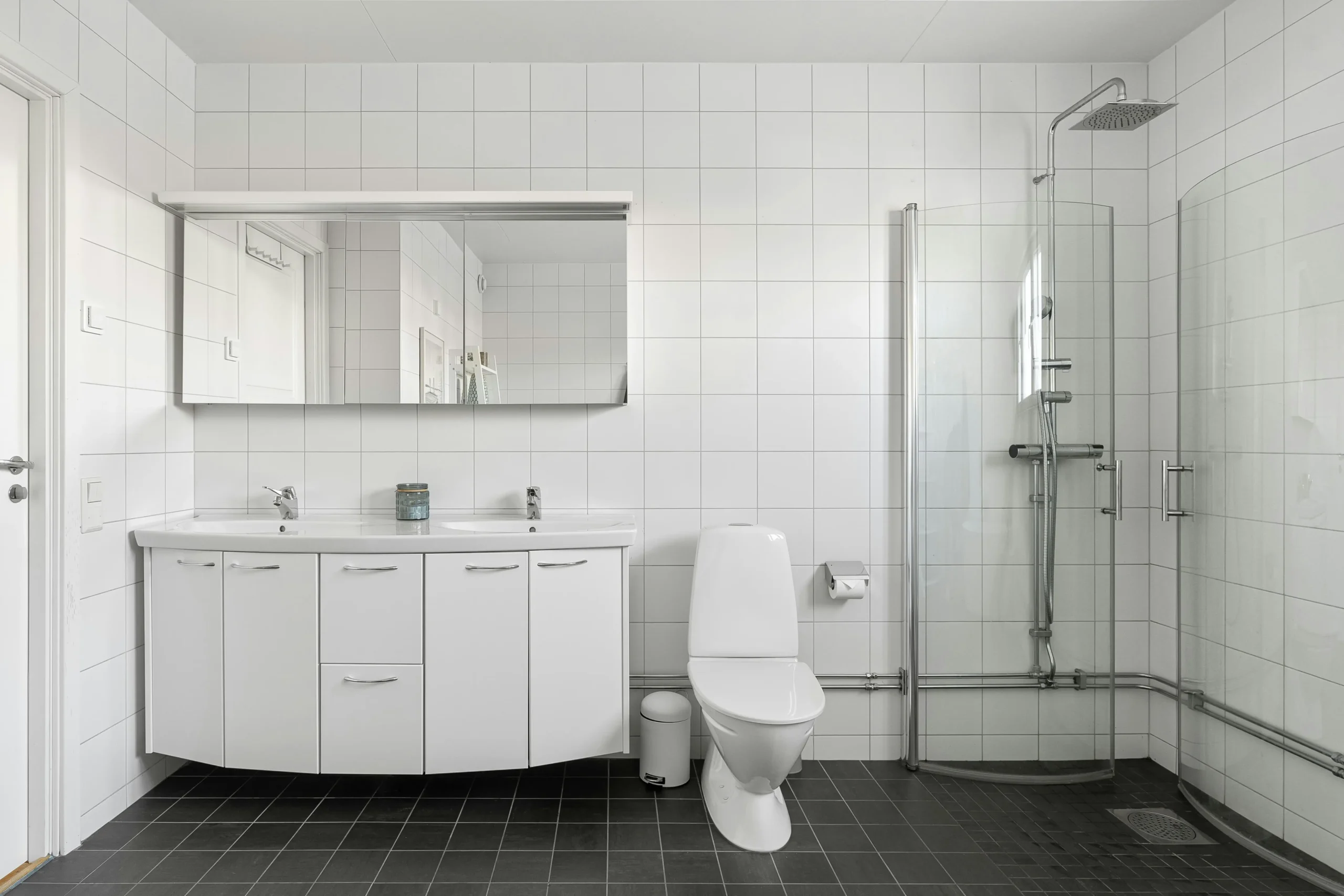
by Alex Tyson (https://unsplash.com/@alextyson195)
Choosing the right type of renovation can maximise both satisfaction and return on investment.
Detailed Costs of Common Bathroom Fixtures and Fittings
When planning a bathroom renovation, understanding fixture costs is crucial. These elements often dictate both budget and style. There are substantial price variations in each category, allowing for budget flexibility.
Toilets
Toilets vary widely in price. Basic models start as low as $100. Luxurious, high-efficiency toilets can reach up to $3,000. Factors such as brand, features, and design style play a role. For practical advice, see Choosing the Perfect Toilet for Your Bathroom Renovation.
Sinks
Sinks come in countless styles. A basic pedestal sink might cost around $50. A designer vessel sink could set you back $1,000 or more. Material choice impacts the price significantly. Explore related insights in Bathroom Fixture Upgrades: Choosing the Right Faucets, Sinks, and Toilets for Your Bathroom Renovation in Sydney.
Bathtubs
Bathtub costs depend on style and material. Basic acrylic tubs average $300. High-end freestanding tubs could cost upwards of $5,000. Additional features like jets add to cost. You can explore more options in Top 3 Bathtubs To Replace Out Dated Bathtubs in Bathroom Renovations.
Common Fixture Price Ranges:
- Toilets: $100 – $3,000
- Sinks: $50 – $1,000
- Bathtubs: $300 – $5,000+
Showers
Showers are another key expense. Standard pre-fabricated units may range from $500 to $2,500. Custom walk-in designs reach $10,000 or more, depending on materials and labor. Learn how to enhance your shower design in Crafting Your Dream Shower.
Faucets
Faucet prices depend on brand and style. Affordable faucets start at $50. Premium models with cutting-edge technology climb to $1,000. For a modern tech twist, check Incorporating Technology into Your Bathroom Renovation.
Additional Fixture Costs:
- Showers: $500 – $10,000+
- Faucets: $50 – $1,000+
The wide range of costs emphasises the need for careful planning. Matching fixtures with the intended style without exceeding budget is key. Balancing aesthetics and cost ensures satisfaction.
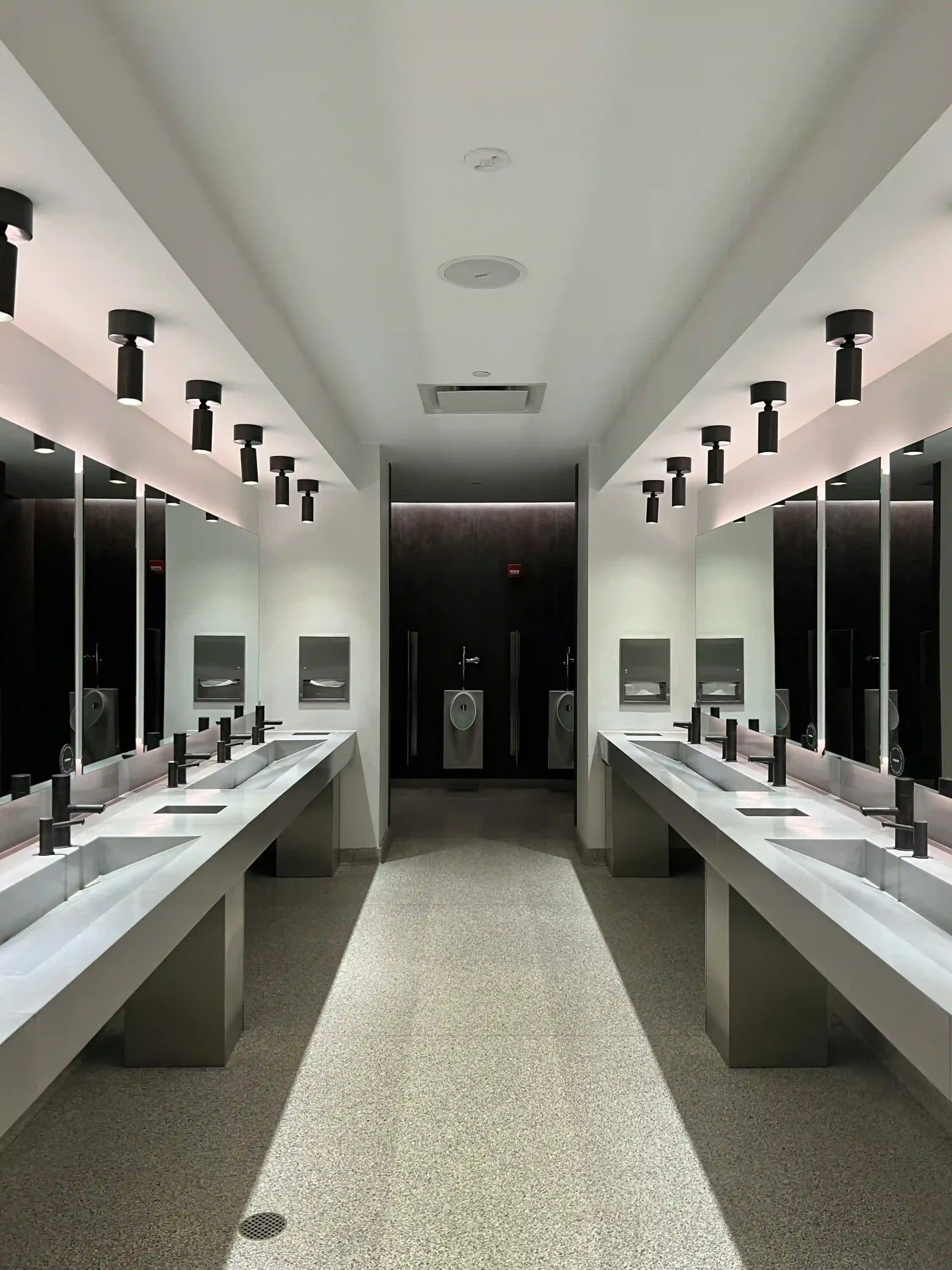
by Zach (https://unsplash.com/@zachparrish)
Researching each category’s options offers perspective on potential expenses. Planning ahead helps avoid surprises during renovations. Whether you choose budget-friendly or luxurious upgrades, awareness is essential.
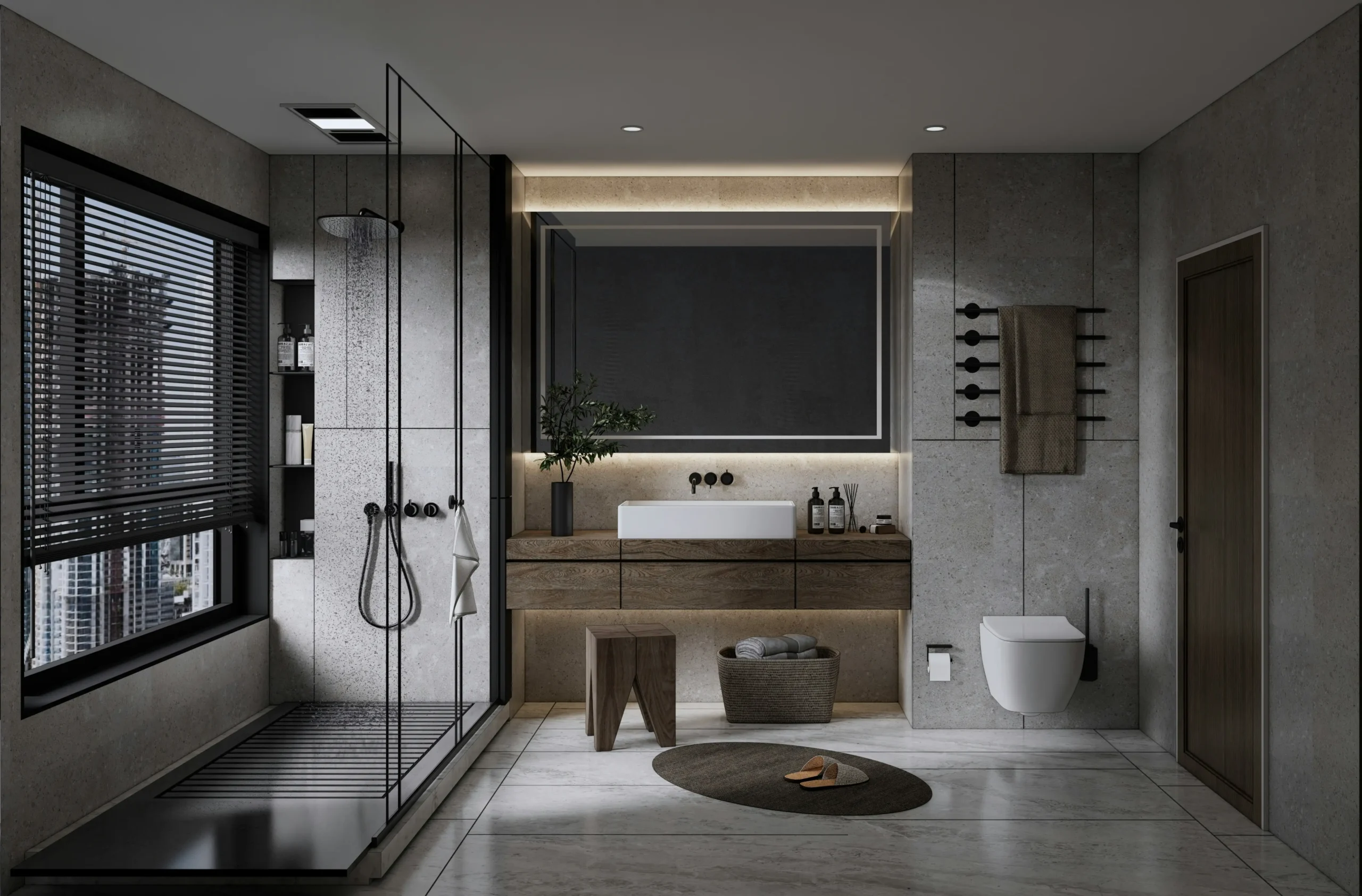
by Mohammad Najjar (https://unsplash.com/@arche7vn)
Plumbing, Electrical, and Structural Work: Hidden Costs Explained
Renovating a bathroom involves more than just visible changes. Plumbing, electrical, and structural components often include hidden costs. These elements play a crucial role in functionality and safety.
Plumbing Costs
Plumbing can become expensive, especially with layout changes. Moving pipes or installing new lines adds complexity. Replacing old pipes can range from $1,000 to $5,000.
Electrical Upgrades
Modern bathrooms demand more electricity. Adding outlets, vanity lighting, or heated floors increases costs. Expect to budget between $500 and $2,500 for electrical updates. Explore heated flooring insights in The Ultimate Guide to Underfloor Heating.
Structural Changes
Structural work can significantly impact budgets. This involves moving walls or reinforcing flooring. Minor structural adjustments might cost around $2,000, while major projects can exceed $10,000.
Common Costs in These Areas:
- Plumbing upgrades: $1,000 – $5,000
- Electrical work: $500 – $2,500
- Structural changes: $2,000 – $10,000+
How Much Does It Cost to Redo a Bathroom: Planning for Hidden Costs
Anticipate potential surprises by thoroughly inspecting existing systems. Consider contingencies for hidden issues like rot or outdated wiring. This foresight helps manage both scope and budget effectively.
To ensure compliance and approvals, see NSW Renovation Rules Explained: Council Approval, CDC or Exempt, and for official reference, visit NSW Fair Trading – Building & Renovating.
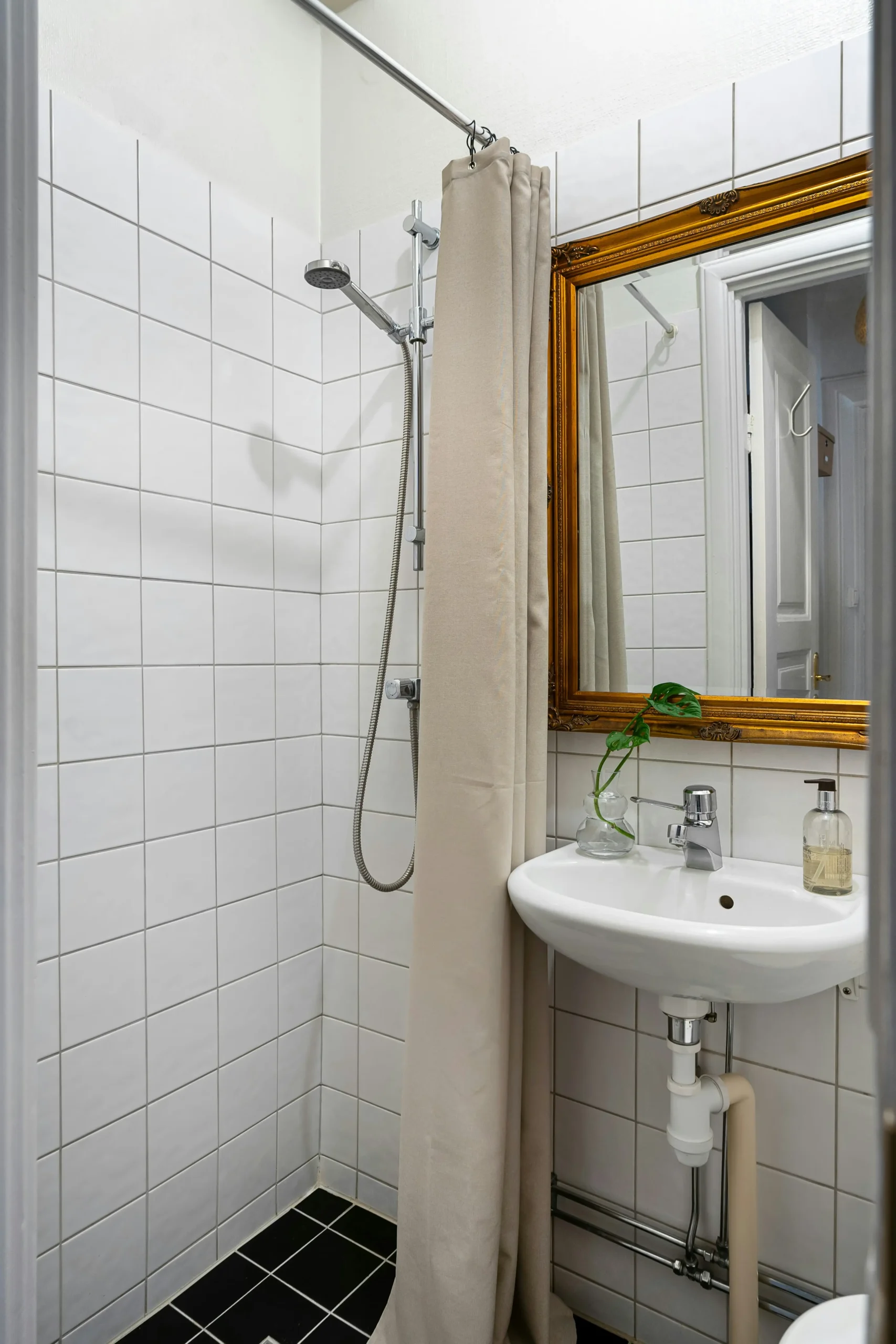
by Lisa Anna (https://unsplash.com/@lisaanna195)
Tiling, Flooring, and Waterproofing: Essential Cost Considerations
Tiling and flooring set the visual and functional tone of your bathroom. Their cost can vary significantly based on material choice. Ceramic tiles might be budget-friendly, but natural stone adds luxury and cost. For tile selection tips, see Bathroom Tile Selection Sydney | Buyer’s Guide by RJG Group.
Waterproofing is vital in moist environments like bathrooms. It protects against damage and mold. Skipping it to save costs can lead to greater expenses down the road due to potential water damage. Learn more in Waterproofing your bathroom.
Key Costs to Consider
- Ceramic tiles: $3 – $5 per square foot
- Natural stone tiles: $7 – $15 per square foot
- Floor waterproofing: $1 – $3 per square foot
Flooring materials range from affordable to premium. Vinyl and laminate offer cost-effective solutions. Hardwood or stone provides elegance but come with a higher price tag.
Tile installation can affect the overall budget too. Complex designs or mosaic patterns require more labor time. Always factor in labor costs when calculating the total price of tiling and flooring.
Proper waterproofing ensures your investment lasts. Consider it essential, not optional, for long-term bathroom integrity.
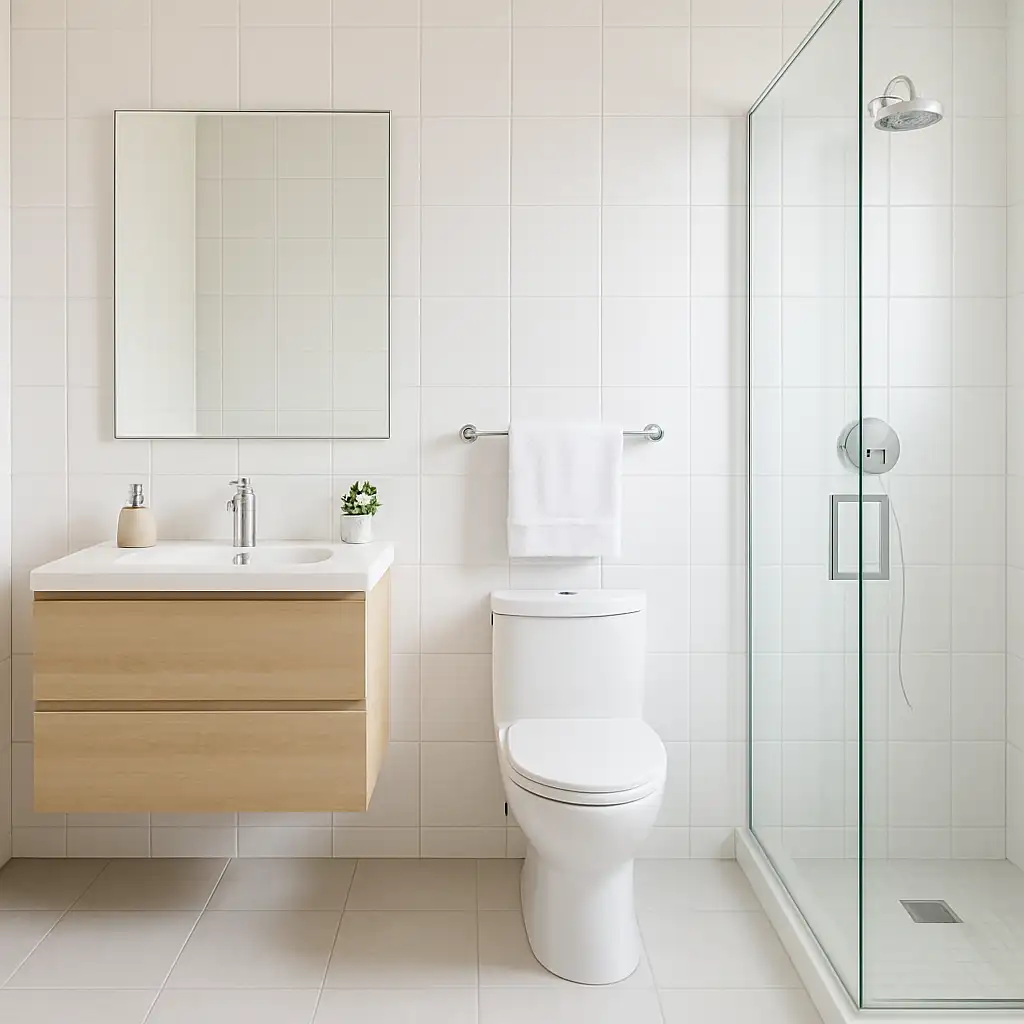
by Ian Talmacs (https://unsplash.com/@iantalmacs)
Design, Lighting, and Ventilation: Enhancing Function and Style
A well-designed bathroom elevates the space’s function and appearance. Thoughtful design choices maximise space and improve everyday use. Hiring a professional can refine aesthetics to match personal taste.
Lighting plays a crucial role in bathroom design. It affects mood and functionality. Consider layered lighting: ambient, task, and accent light. This combination enhances atmosphere and practicality. See how lighting shapes ambience in Choosing the Right Lighting Fixtures for Your Bathroom.
Essential Elements to Consider
- Ambient lighting: general illumination
- Task lighting: for mirrors and vanities
- Accent lighting: for décor emphasis
Good ventilation protects a bathroom from humidity. It helps avoid mold and improves air quality. Installing a high-quality fan is a worthwhile investment. For overall planning, read Smart Planning Tips to Maximise Value on Your Home Renovation in Sydney.
Design elements and proper lighting create a visually appealing, efficient space. Don’t overlook ventilation; it’s crucial for a sustainable and healthy environment.
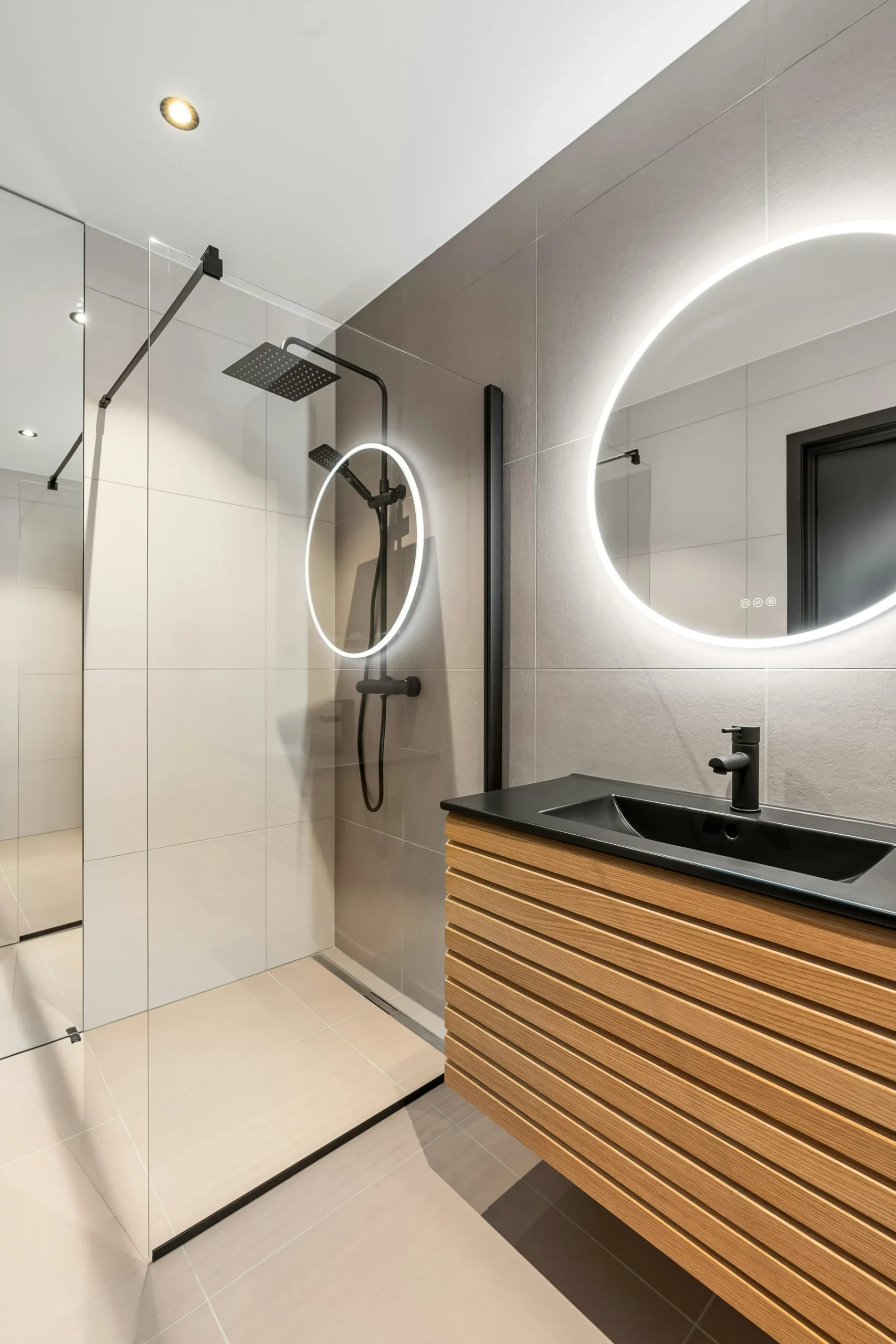
by Alex Tyson (https://unsplash.com/@alextyson195)
Permits, Inspections, and Compliance: What You Need to Know
Before starting a bathroom renovation, check local regulations. Permits are crucial for extensive work. They ensure compliance with building codes.
Inspections verify that work follows safety standards. They protect homeowners from potential hazards. Always schedule inspections at the right stages of the project.
Key Points for Consideration
- Confirm if permits are needed.
- Schedule inspections timely.
- Ensure compliance with all local codes.
Ignoring permits can lead to costly fines and rework. Proper compliance ensures a smooth, problem-free renovation. Always prioritise safety and legal requirements.
DIY vs. Hiring a Professional: Cost Savings and Risks
Deciding between DIY and hiring a professional can impact both cost and outcome. Each option presents distinct advantages and challenges.
Opting for a DIY renovation can save money on labor. It provides control over project decisions. However, it demands time and skill.
Conversely, hiring a bathroom renovation professional often leads to higher costs. Professionals possess expertise and efficiency. They can handle complex tasks with ease.
Choosing a DIY route involves potential risks. Mistakes can lead to extra expenses and delays. Professionals offer warranties and liability insurance, minimising risks.
Considerations for DIY vs. Professional
- Assess your skill level and available time.
- Weigh potential cost savings against possible risks.
- Evaluate the complexity of the project.
Ultimately, the choice depends on the scope of work and your confidence. Weighing your options carefully can ensure a successful renovation.
How to Set a Realistic Bathroom Renovation Budget
Establishing a feasible budget is essential for a successful bathroom renovation. A clear budget prevents overspending and ensures the project runs smoothly. Understanding costs involved helps in setting realistic financial boundaries.
Start by assessing your bathroom’s current condition and your renovation goals. This helps in identifying essential expenses versus optional upgrades. Breaking down the costs into categories simplifies planning. See: How Much to Budget for Bathroom Renovations.
Be sure to include a contingency fund for unexpected costs. This prevents budget strain due to unforeseen issues. A cushion of 10-20% of the total budget is advisable. A cushion is advisable—see Tips for Planning Your Bathroom Renovation on a Budget.
Budget Planning Tips
- List all required changes and their estimated costs.
- Compare prices and get multiple quotes from contractors.
- Factor in both labor and material costs.
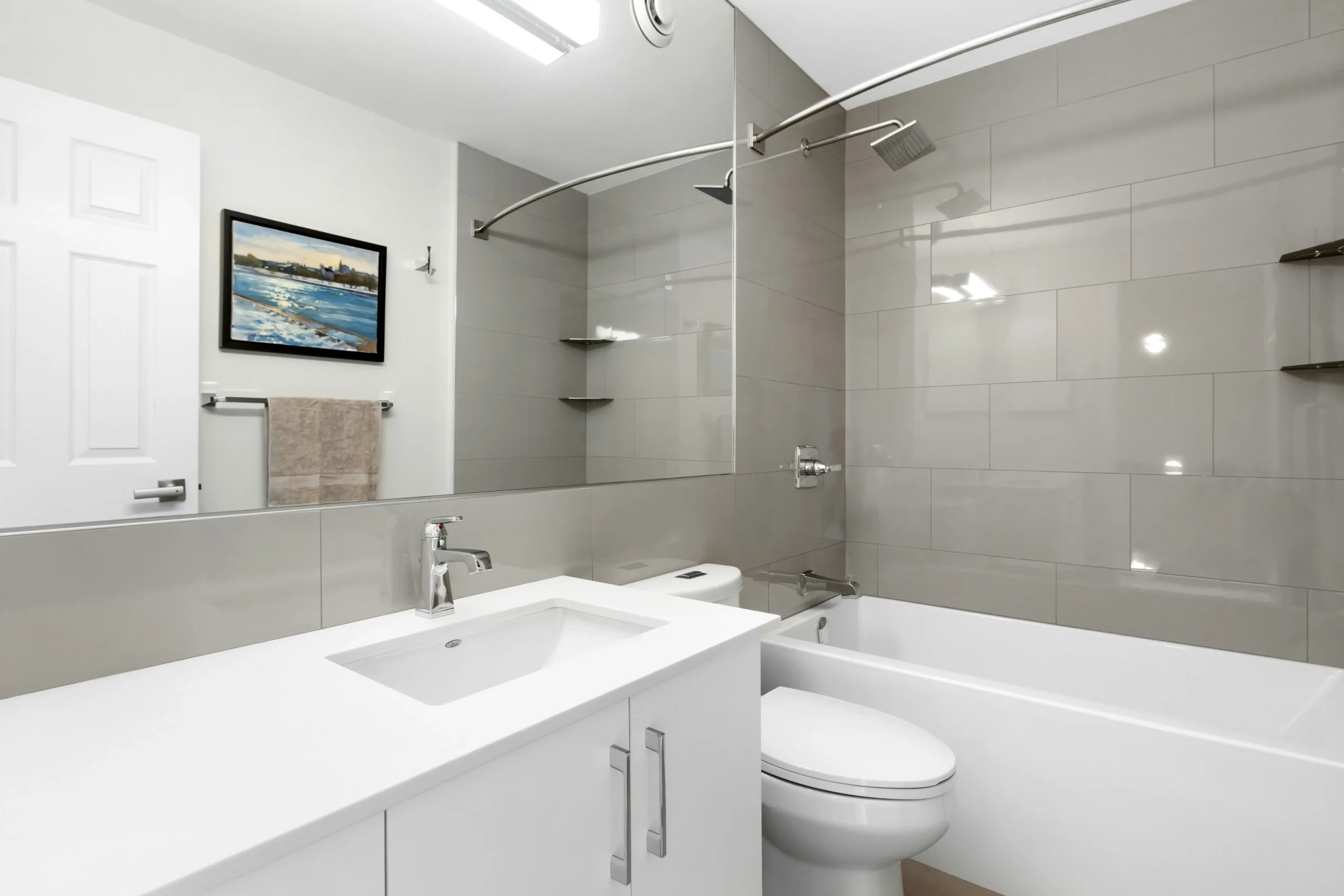 by Point3D Commercial Imaging Ltd. (https://unsplash.com/@3dottawa)
by Point3D Commercial Imaging Ltd. (https://unsplash.com/@3dottawa)
By setting a realistic budget, you maintain control over your expenses. Your project has a better chance of staying on track, leading to a satisfying end result.
How Much Does It Cost to Redo a Bathroom: Tips to Save on Your Bathroom Remodel Price
Cutting costs without sacrificing quality is achievable with careful planning. Strategic choices can help reduce the overall renovation expense.
One method is to keep the existing layout. Changing plumbing or electrical layouts significantly increases costs. By keeping these intact, you avoid unnecessary expenditures.
Cost-Saving Strategies:
- Refinish rather than replace fixtures like bathtubs.
- Opt for cost-effective materials, such as ceramic tiles over natural stone.
- Use stock cabinetry instead of custom-made options.
Another approach is to prioritise upgrades based on necessity. Focus on critical areas first, then add luxury items if the budget allows.
Additional Tips:
- Shop for materials during sales or use discount coupons.
- Consider slightly used or open-box items for discounts.
- DIY simple tasks like painting to save on labor costs.
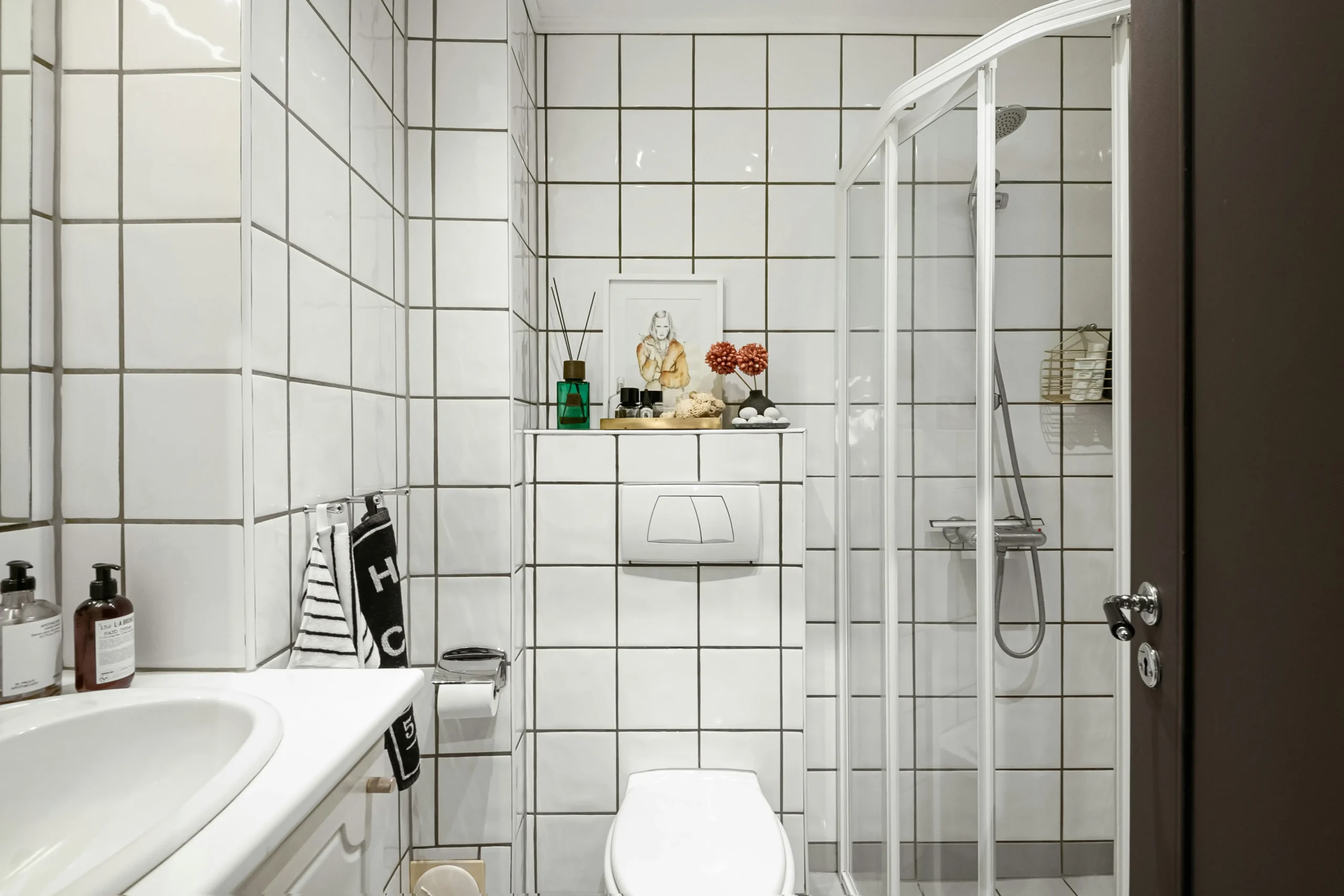
by Alex Tyson (https://unsplash.com/@alextyson195)
Implementing these tips ensures you get more value from your renovation. Effective budgeting balances economy with the desire for a fresh, updated space.
Unexpected Expenses: Planning for Contingencies
Surprises lurk even in the most well-planned renovations. Hidden costs can strain a budget, making contingency planning crucial.
Unforeseen issues like water damage or mold can arise. They are costly to fix but vital for safety and durability.
Common Unexpected Expenses:
- Repairing hidden water damage.
- Mold remediation and treatment.
- Structural repairs uncovered during demolition.
Setting aside at least 10-15% of your budget for surprises helps. This buffer ensures that unexpected expenses don’t derail your project. Preparing for these contingencies gives peace of mind and a more successful renovation.
Return on Investment: How Much Value Does a Bathroom Renovation Add?
Renovating your bathroom can significantly boost your home’s value. It appeals to potential buyers and enhances your living experience.
A bathroom remodel often recoups 60-70% of its cost upon sale. This makes it one of the higher-return home improvements.
Key Benefits of Bathroom Renovations:
- Increased resale value.
- Improved functionality.
- Enhanced aesthetic appeal.
Investing in quality materials and trendy designs pays off. New features make daily routines more pleasant while elevating your home’s marketability.
Popular Trends and Upgrades: What’s Worth the Cost?
Modern bathroom trends focus on both style and practicality. Some upgrades significantly enhance both comfort and value.
Luxurious walk-in showers, with multiple spray heads and frameless glass, are popular. They provide a spa-like experience at home. Freestanding tubs also make a strong style statement in any bathroom.
Incorporating smart bathroom tech is becoming increasingly desirable. Features like heated floors or smart lighting can elevate the bathroom experience.
Trendy Upgrades Worth Considering:
- Walk-in showers
- Freestanding tubs
- Smart bathroom technology
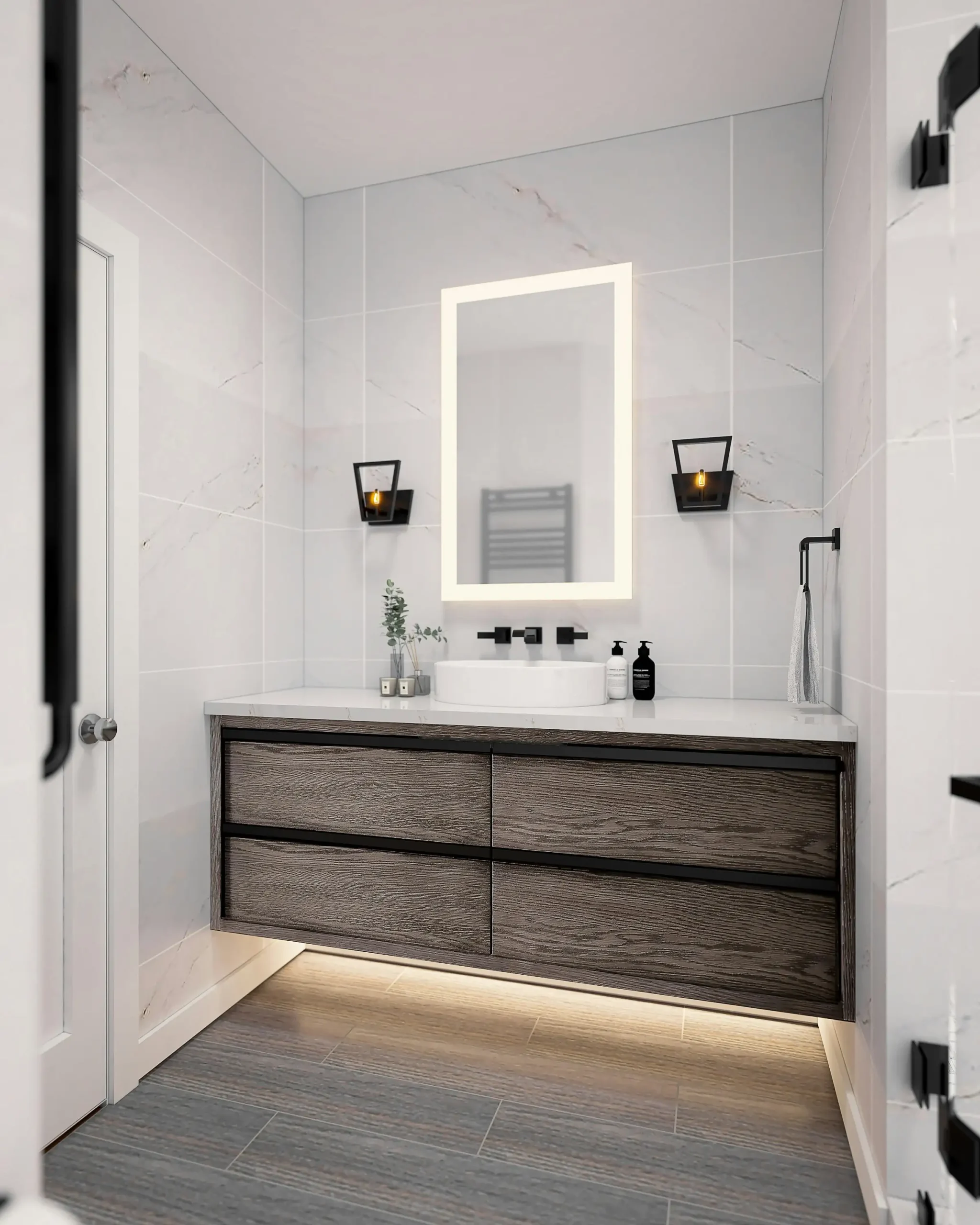
by Billy Jo Catbagan (https://unsplash.com/@billy_sixteenstudio)
While trendy, these upgrades must align with your lifestyle and budget. Selecting quality over quantity can ensure lasting satisfaction and value.
How Much Does It Cost to Redo a Bathroom: Real-Life Bathroom Renovation Case Studies
Renovation projects come in various shapes and sizes. Real-life examples provide practical insights into what to expect. Each project has unique challenges and rewards.
Consider a small city apartment bathroom update. In this case, the owner opted for space-saving features. They installed a compact, wall-mounted sink and a corner shower. The renovation cost was around $8,000. The small space felt larger and more functional post-renovation.
Another project involved a family home’s master bathroom. The homeowners sought a luxurious retreat feel. They included heated floors, a walk-in shower, and a freestanding tub. These upgrades cost approximately $25,000 and transformed the space into a personal oasis.
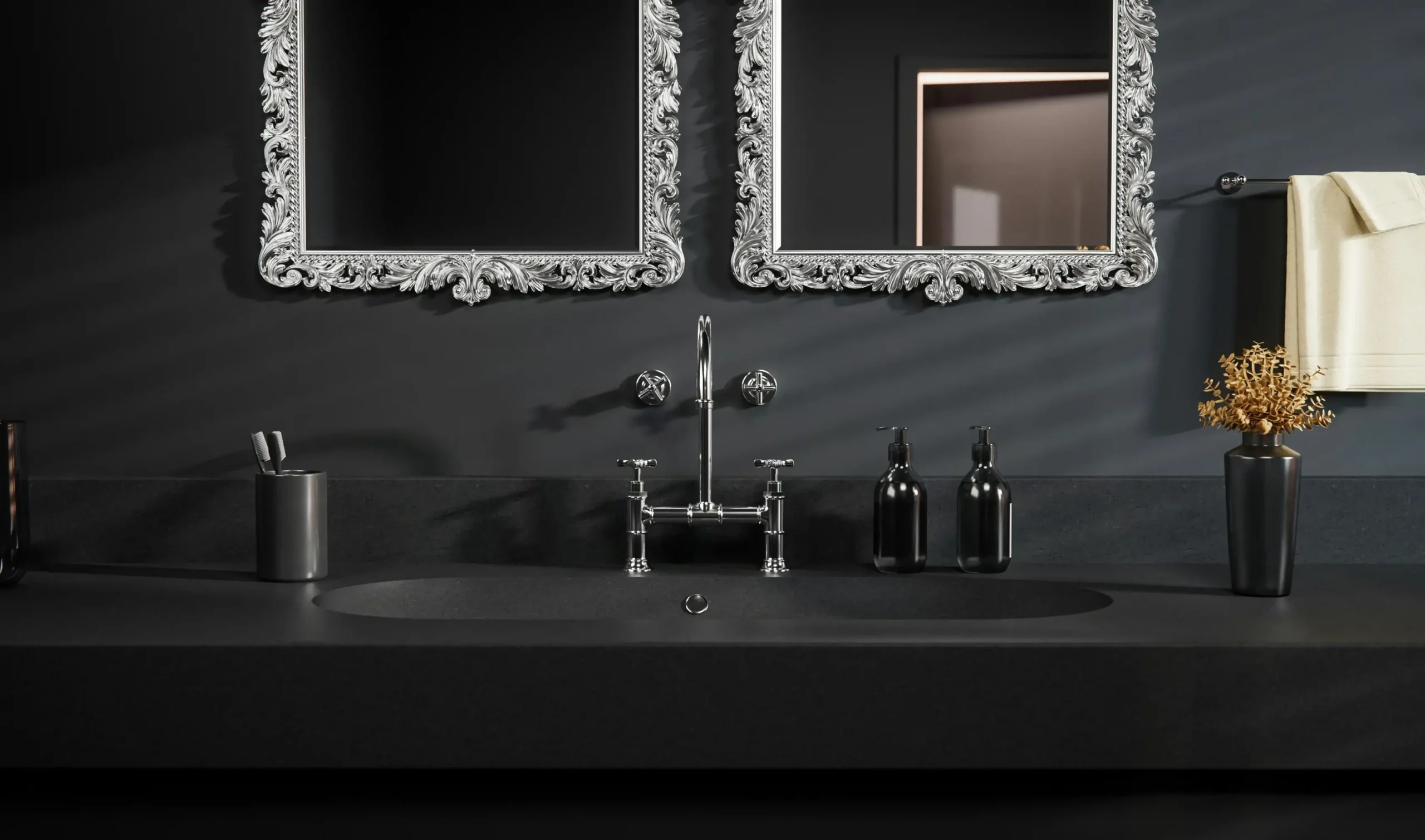
by nuddle (https://unsplash.com/@nuddle)
Finally, a budget-friendly remodel focused on eco-friendly upgrades. The owner installed low-flow fixtures and a dual-flush toilet. The cost was about $5,500, reducing water bills significantly while enhancing sustainability.
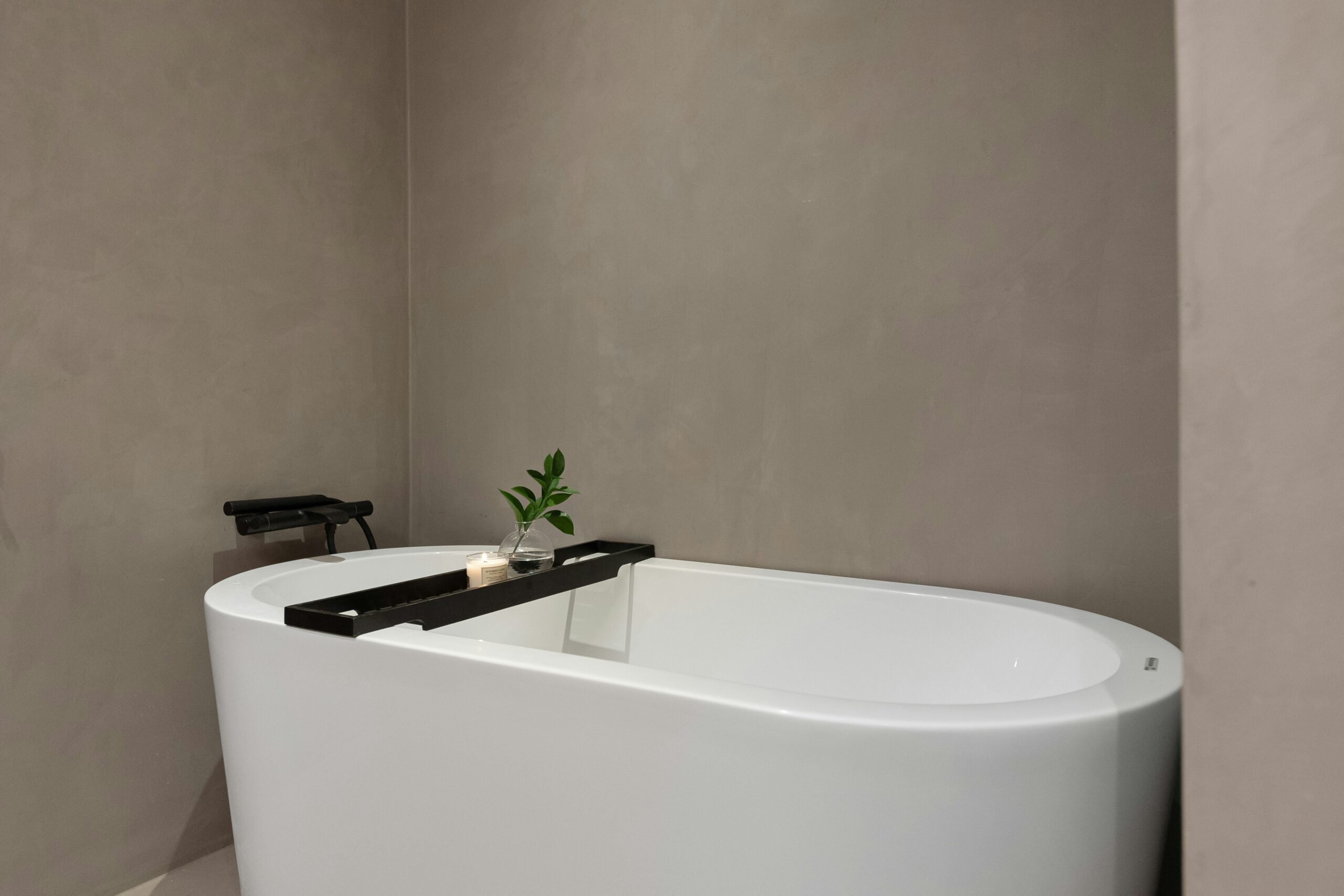
by Lisa Anna (https://unsplash.com/@lisaanna195)
Each of these case studies demonstrates the varied possibilities in bathroom remodeling. Your budget and needs will shape the outcome.
Frequently Asked Questions About Bathroom Renovation Pricing
When considering a bathroom renovation, many questions may arise. Here, we address some common concerns. Understanding these can aid in planning your project.
How much does a typical bathroom remodel cost?
The range is broad, usually between $6,000 and $15,000. Factors include size and chosen materials.
What percentage of the budget should go to labor?
Labor can take up 40-60% of your total budget. Hiring experienced professionals ensures quality results.
Can a remodel increase my home’s value?
Yes, generally, a well-done remodel can recover 60-70% of its cost in added home value.
Should I hire a professional or go DIY?
This depends on your skills and time. DIY saves money but may lack polish.
List of common questions:
- Can I reduce costs by sourcing materials?
- Is a permit necessary for small changes?
- How long does a typical remodel take?
- Are there benefits to energy-efficient fixtures?
- What’s the best way to choose a contractor?
Final Thoughts: Making the Most of Your Bathroom Renovation
A bathroom renovation is a significant investment in your home. Careful planning and budgeting are essential. Consider both current needs and future resale value when planning.
Focus on balancing style with function. Choose quality materials and skilled professionals to get the best result. With thoughtful decisions, your remodel can enhance both comfort and home value.








 Defining Modern Excellence with Integrity
Defining Modern Excellence with Integrity




